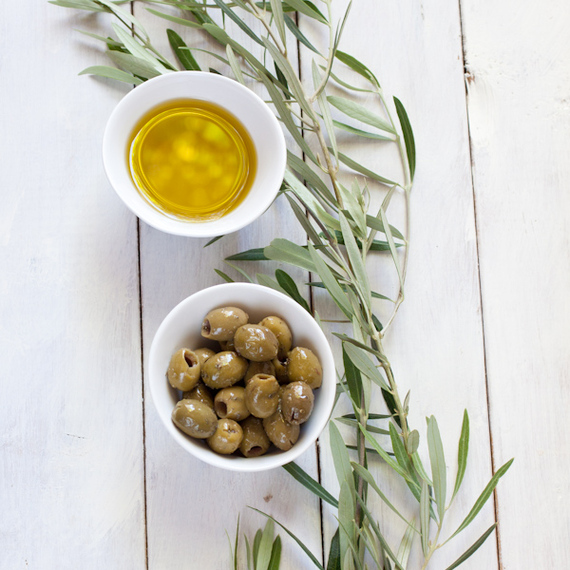
Researchers at the National Institutes of Health, led by Christopher Ramsden, M.D., have been looking at this question, which has far-reaching implications for all types of chronic pain. They studied people with chronic daily headache, defined as: headaches lasting 4 hours per day, for at least 15 days a month, for at least 3 months.
The people studied had this level of pain for at least two years and were taking an average of six headache medications at the start of the study. Some of the participants had chronic migraine.
I caught up with Dr. Joseph Hibbeln, a member of the research team, at the Nutrition and Health conference to learn more. The premise of the study is that our current Standard American Diet (SAD) is artificially high in unsaturated fatty acids (omega-6s) found in seed oils. These polyunsaturated fatty acids -- notably linoleic acid and its inflammatory product arachidonic acid -- may promote physical pain by showing up in both immune and nervous system tissues. Arachidonic acid is the building block for active compounds that are involved in pain. When oxidized, linoleic acid itself also directly forms pain compounds.
Head spinning? Here's an easy way to remember it: seeds = 6 = pain compounds.
- Omega-3 fatty acids are primarily found in fatty fish as well as eggs. Ground flax seeds and flax oil are another good source.
- Polyunsaturated omega-6 fatty acids come from seed oils like soybean, cottonseed, sunflower, peanut, and corn -- found in shortening, margarine, and fried foods.
- Up until the 1900s, humans ate a balance of the two.
- Since the 1950s, as food technology changed, the ratio shifted in favor of omega-6s. Health experts declared that animal fats caused heart disease, and margarine was touted as a healthier choice than butter.
- Corn and soybean oil (artificially cheap because of government subsidies) became a huge part of our diet as manufacturers used them in nearly everything to replace more expensive animal fats.
- Omega-6 fatty acids are stored in our fat tissues, especially in the belly. You might think that having these stored fats isn't such a big deal, but these fats are active, meaning that they are actively generating pain-related compounds and releasing them into the bloodstream.
- If you shift your intake to favor more omega-3s, it can still take up to four years for your body to release all the excess stored omega-6 fatty acids from your fat tissues.
- You can nix the 6 and raise the 3s by following a Mediterranean diet pattern: use olive oil instead of seed oils, eat more fish, fruits and vegetables, and avoid fried foods.
- They studied people with chronic headache and focused solely on eating swaps, not medications or supplements.
- They sought to determine if eating fewer omega-6s would reduce pain, a novel approach to pain management.
- They studied the difference in pain outcomes by comparing just reducing omega-6s, or reducing them while increasing omega-3s.
- They let the study subjects feed themselves (unlike a metabolic ward study, where all food is provided and people are locked in).
- Note that there was a comparison but not a control group in this study (here's why that matters).
- Doubling their reduction in headache days per month (-8.8 days vs -4.0 days). Yes, you read that right, an average of 9 fewer headache days every month!
- Experiencing three times fewer headache hours per day (-4.6 hours vs -1.2 hours)
- Having a much lower probability of severe headache days (-28 percent probability vs. -8 percent probability)
- While use of preventive medications didn't change during the study, the H3-L6 group reduced their intake of medications by over one-third, including migraine medications like triptans. This is important because these medications have side effects, one of which is creating rebound headaches.
- Blood tests showed higher levels of natural anti-pain compounds and lower levels of pro-pain compounds in the H3-L6 group.
What does this mean for you?
If you experience chronic pain, taking a look at the fats in your diet and swapping them out for foods and fats higher in omega-3s might be a great long-term strategy for you. Note that it took eight weeks on the diet to begin to notice differences in headache hours per day.
You don't have to take fish oil supplements to see results, just choose fattier types of fish, eat fish and omega-3-rich eggs more often, and cook with olive oil or coconut oil instead of vegetable seed oil. Use grass-fed butter or ghee instead of margarine. And start reading those labels. Gradually phase out foods that come in boxes, wrappers, and bags and replace them with whole foods.
I love that researchers are finally coming around to the idea that food can be a significant healing force, especially in those people who have tried many medications and not seen relief. It gives all chronic pain sufferers hope.
Stephanie Weaver, MPH, is a writer, wellness advocate, and food blogger offering migraine-friendly recipes every week. Her book The Migraine Relief Plan will be published in February 2017; her online class is available now. Join her mailing list to keep abreast of her project. Follow her on Twitter for migraine tips. Become a fan on Facebook to ask questions.